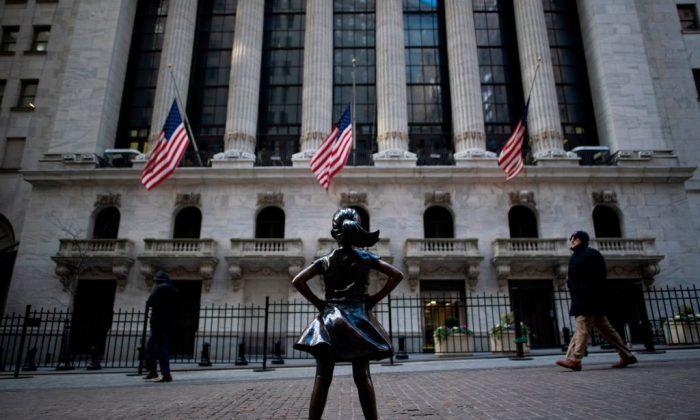Commentary
Investors may need to prepare themselves for the possibility that the good times are over.
Stock market investors have generally enjoyed a decade of great returns dating back to 2013, when the market emerged from the doldrums of the 2008 financial crisis.
The S&P 500 has now lost more than 25 percent in 2022 after a week of selloffs following the Federal Reserve’s third straight month of 75-basis-point benchmark interest rate increases. The outlook isn’t very optimistic.
Before we dive into what the future may hold, it’s worth revisiting how spectacular returns have been over the last decade. In the three years from the beginning of 2019 to the end of last year (2021), the S&P 500 has increased 89.9 percent, or at an annual rate of 23.8 percent. During the decade from 2011 to 2021, the market gained 274.7 percent, or an annual return of 14.1 percent over the decade.
Prior to that, though, the U.S. stock market had gone through long periods of lackluster returns. In the eight years from the beginning of 2000 (near the height of the “dot-com” bubble) to the end of 2008 (the midst of the great financial crisis) the S&P 500 returned -5.8 percent annually. And in the twelve years from 1968 to the end of 1981, the index returned only 1.4 percent annually.
If the S&P 500 index ends this year at the same level as today, 2022 would register as the third-worst annual return going all the way back to 1975, with 2008 and 2002 being the only worse years, with returns of -38.5 percent and 23.4 percent respectively.
All of this is to say that investors have generally been rather spoiled over the last few decades. We certainly don’t expect (or hope for) annual declines of 20 percent or more in the next few years, but the macroeconomic environment also does not encourage optimism.
Could the market trade sideways over the next several years, with small pockets of gains and losses but ultimately without sustained positive momentum? A few experts believe a “lost decade” could indeed be in the cards.
Albert Edwards of Société Générale had argued for years that the most recent bull market—propped up by years of zero-to-negative interest rates and massive money printing—would end and usher in a period of high inflation, high interest rates, and high government spending in an attempt to boost the economy.
Morgan Stanley’s chief U.S. economist put it succinctly in a note to clients on Sept. 23: “We now see the Fed delivering additional pain to households and businesses via a higher rate. While the alternative—persistently high inflation—is harder to bear, the path to a soft landing has narrowed.”
“The higher interest rates go, the greater the risk of a recession.”
The bank now expects another 75 basis point hike in November, followed by a 50 basis point hike in December and a smaller 25 basis point increase in January 2023. Morgan Stanley also lowered its forecast for 2023 GDP growth to 0.5 percent and revised down its 2022 GDP growth estimate to zero.
Major banks are cutting year-end targets for the S&P 500, with generally bullish Goldman Sachs projecting the index to end the year at 3,600 points, slightly below its current mark. Michael Harnett, chief investment strategist at Bank of America, told Reuters that the S&P could end the year as low as 3,020, which is another sizable drop from today.
Looking ahead, several factors will create headwinds for much of 2023, if not beyond. Inflation remains sticky. High interest rates will cut into consumer budgets and make debt more expensive, from mortgages and car loans to credit card balances. Higher debt service burden will also hit companies. Businesses facing higher costs and lower revenues will look to lay off and cut staff, further exacerbating the situation.
We hear investors looking for signs of “capitulation” in the market that typically would indicate a near-term bottom in stocks. But such tried-and-true investing methods may no longer work, with the Federal Reserve having effectively abandoned the stock market, and economic fundamentals are so weak.
All of this will come as a wake-up call for those accustomed to the market going up the majority of the time, and a central bank that has always had the market’s back. The previously useful passive index investing strategy of holding a market index and depending on the “tide to lift all boats” should also be thrown out.
From here on out, investors may need to resort to old-school stock picking, choosing quality companies with healthy balance sheets and high dividends, and short-term buying and selling.
Sustained periods of market stagnation? It may just be the new “old” normal.





